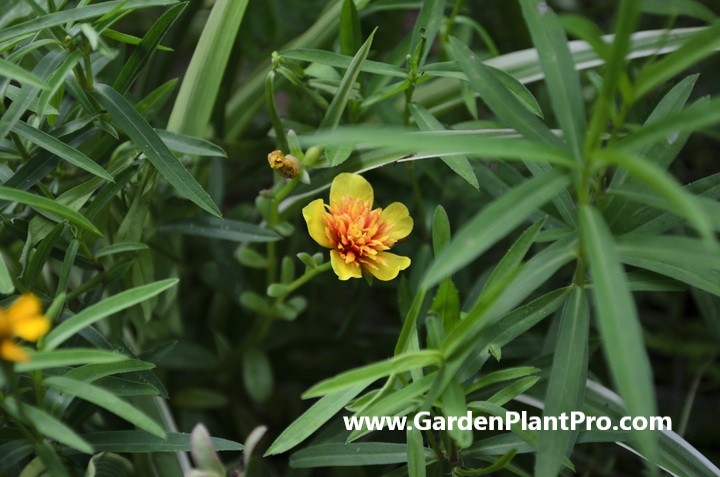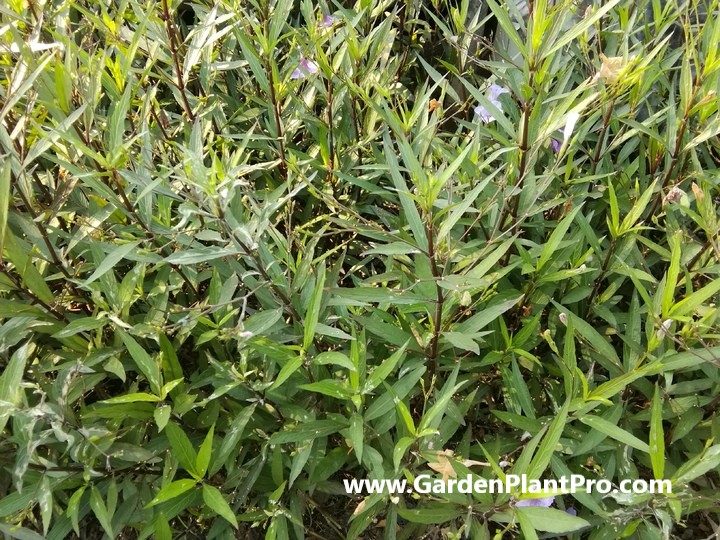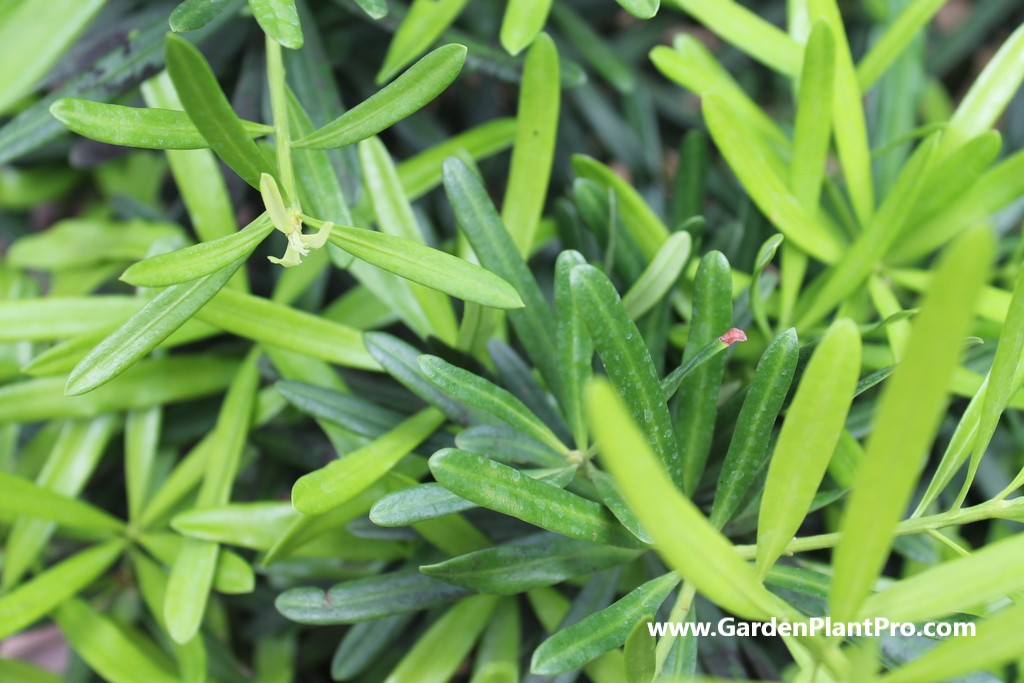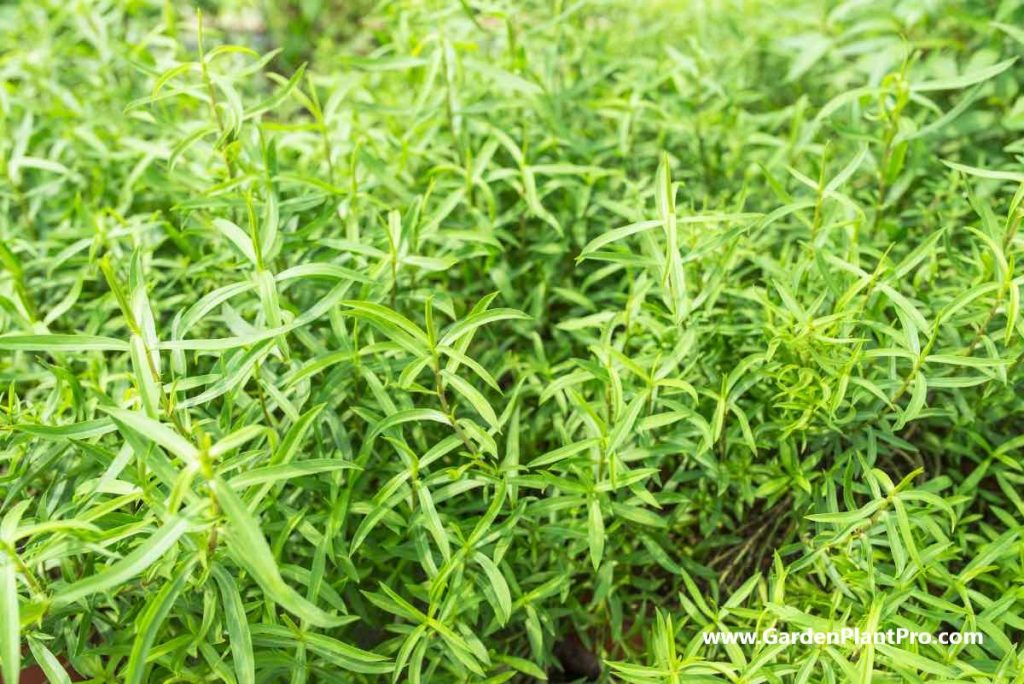Tarragon is a traditional French herb known for its delicate taste and culinary flexibility. While it is commonly used in French cooking, this herb has grown in popularity across the world due to its distinct flavor and perfume.
Growing tarragon at home is simple and enjoyable, and it’s an excellent way to add a fresh and wonderful flavor to your dishes. In this guide, we’ll look at how to produce and care for tarragon plants, as well as some unique ways to include this herb into your favorite recipes.
A Brief History
Tarragon is an essential herb to French cuisine, with a distinctive anise-like flavor. It has been used for centuries in both cooking and medicine, and is believed to have originated in Central Asia. The Romans are credited with introducing it to Europe, where it quickly became a staple in French cooking and the national herb of France.
Tarragon was also used for its medicinal properties by many cultures throughout history. In the Middle Ages, it was commonly used to treat digestive ailments and was thought to help prevent epileptic seizures. Today, it is still used in herbal medicine as well as in cooking. Its flavor pairs especially well with seafood and eggs, making it a key ingredient in many French dishes.
Nutritional Benefits
Tarragon is a flavorful herb with many nutritional benefits. It’s low in calories and carbs, yet contains vitamins, minerals, and antioxidants that can be beneficial for your health. In animal studies, tarragon extract has been shown to reduce inflammation levels and help protect against oxidative damage.
The nutrient content of tarragon varies depending on the variety, but it is generally a good source of manganese, iron, and potassium. It also contains small amounts of zinc, phosphorus, magnesium, calcium, selenium, and dietary fiber.
To take advantage of the nutritional benefits of tarragon, it’s important to grow the herb in an optimal environment. This includes providing full sun or partial shade and well-drained soil. When growing tarragon from seed or seedlings, space the plants six to 12 inches apart. Water them regularly to keep the soil moist and pinch off any flowers for a constant supply of leaves.
When it comes time to harvest your tarragon crop, you can do so when the leaves are young and tender. Cut off sprigs from the top of the plant with scissors or pruning shears. Once you’ve harvested your crop, store it in an airtight container in a cool place for up to two weeks or freeze it for up to three months.

Common Varieties & Their Uses
When it comes to the herb tarragon, there are two main varieties: French and Russian. Both tarragon varieties are widely used in French cooking, but they do have some differences in flavor and usage.
French tarragon is the more popular of the two varieties, as it has a stronger anise flavor with notes of lemon and licorice. It is also the preferred variety for culinary purposes due to its superior flavor. French tarragon is best used fresh in salads, sauces and dishes like omelettes. It can also be dried and used in soups, stews and other recipes where you want to add a subtle anise flavor.
Russian tarragon is not as flavorful as its French counterpart, but it does have some uses. Russian tarragon is often used in herbal teas to provide a mild licorice flavor, as well as for making tinctures and infusions. It can also be used as a substitute for French tarragon in recipes where its milder flavor won’t be missed.
When growing tarragon at home, it is important to choose the right variety for your needs. French tarragon is the preferred choice for culinary purposes due to its superior flavor, while Russian tarragon can be used for its milder flavor if desired.
It is also important to ensure that you purchase plants or seeds from a reputable source to ensure that you get true varieties rather than hybrids or other varieties with different characteristics. Once you have chosen the right variety for your needs, you can begin preparing the soil, planting the seeds or seedlings, and caring for your plants until they are ready to harvest.
When To Sow
When sowing tarragon, it’s important to consider both the variety and the climate in which it will be grown. French tarragon is best propagated by cuttings, so it should be planted in spring or early summer. Russian tarragon is grown from seed, so it should be sown indoors before the area’s last expected frost and seedlings planted outside after risk of frost has passed.
In terms of soil preparation, make sure to dig a planting hole twice as wide and to the same depth as the root-ball. Mix compost and decomposed manure into the soil for optimal growth. For French tarragon, plant in full sun or part shade. If growing Russian tarragon in pots, choose a deep pot filled with gritty compost.
Keep in mind that if you are growing French tarragon from a cutting or division, it may take up to three years for the plant to reach its full size and flavor potential. It’s also important to note that French tarragon does not set viable seed and must be propagated by cuttings or divisions. Russian tarragon does set viable seed and can therefore be grown from seed each year.
Choose The Right Location
When choosing the right location for your tarragon plants, there are several factors to consider. It is important to select a spot with plenty of sun and shelter, as tarragon needs at least six hours of direct sunlight each day.
French tarragon especially needs a well-drained soil, and adding a generous quantity of horticultural grit to the planting area will help ensure that your plants don’t become waterlogged. A full sun location with enriched, well-draining soil and a neutral pH of 6.5 to 7.0 is ideal for growing tarragon.
If you are planting directly in the ground, make sure your soil is free from weeds and has been cultivated properly. If you are planting in pots or containers, select a premium organic potting mix, position in an area with morning sun and afternoon shade and make sure the pot is sufficiently large so that it has enough soil available for the roots to thrive.
Prepare The Soil
Before planting tarragon, it is important to prepare the soil for optimal growth. The best soil for tarragon is light, sandy soil that is low in nutrients. It should also be well-drained and amended with horticultural grit and compost or decomposed manure. If planting in a pot, choose a deep pot that will accommodate the tarragon’s root system.
DIY PROJECT: Collect rainwater no matter where you live...
This DIY project is the best way to legally collect rainwater NO MATTER where you live. Get chlorine-free water, cut down on your water bills, and have enough for an emergency situation or to water your garden. Read More Here...
To prepare the soil, mix in 1-2 inches of compost or decomposed manure. For container growing, fill small pots with a light starter soil and insert the stems about two inches deep. Firm the soil gently around the stem and water well. This will ensure that the roots are properly established and can absorb the nutrients they need to grow healthy plants.
When planting French tarragon herbs, it is important to add some horticultural grit to the soil in order to improve drainage and aeration. This will help prevent root rot and encourage healthy growth.
Finally, mulch around your tarragon plants to help retain moisture, suppress weeds and keep the soil temperature consistent. This will ensure that your plants receive the necessary moisture, nutrients and protection from diseases.

Plant The Seeds, Seedlings Or Cuttings
To plant tarragon seeds, seedlings or cuttings, start by choosing the right location and preparing the soil. Tarragon prefers well-drained soil in a sunny spot, and should be planted in raised beds or containers for best results. Once the soil is prepared, it’s time to plant.
French tarragon does not set viable seed, so buy young plants in spring and either grow in large pots filled with gritty compost or plant directly into garden beds. If starting Russian tarragon from seed, sow indoors a few weeks before the last frost date and germinate on a damp paper towel.
When transplanting tarragon, remove the shrub from the container and gently tease the roots before placing in the hole. Backfill with soil and gently firm down, forming a raised ring around the plant to ensure good drainage. Plant transplants 2 to 3 feet apart to give each plant room to grow.
Propagate tarragon early in the season by taking stem cuttings or making root crown divisions; this also invigorates your established plants. Keep in mind that if you are growing French tarragon from a cutting or division, it may take up to three years for the plant to reach its full size and flavor potential.
It’s important to water your tarragon plants regularly, though not too much as they don’t like wet feet. Fertilizing isn’t necessary but if you wish to add extra nutrients to your plants use a balanced liquid fertilizer every two weeks during their growing season.
Finally, be sure to keep an eye out for common diseases and pests that may affect your tarragon plants; these include powdery mildew, root rot and aphids.
Watering
Watering is essential for growing tarragon at home. French tarragon prefers average watering, though pots will require daily watering throughout summer.
Young tarragon will benefit from watering on alternate days if you’re experiencing prolonged hot, dry spells. Mature tarragon, however, should be fine with a light watering every few days. Established tarragon plants can tolerate drier conditions, but for the best production, keep the soil evenly moist – when it dries 2” down.
Avoid wetting the foliage when watering as this can lead to fungal issues. Indoor herbs should be kept on the dry side – provide a thorough watering and then allow them to dry out before the next one. Give them full sun, some water and just a touch of fertilizer. And don’t forget to divide root-bound plants every two or three years to enjoy a steady supply of fresh tarragon.
When it comes to planting your tarragon outdoors, plants in the ground are unlikely to need much if any watering in summer. However, water may be needed on very light and quick draining soils during prolonged hot and dry spells. Pot grown plants will need regular watering to prevent a check to growth. Pinch off any flowers for a constant supply of fragrant leaves!
Fertilizing
When it comes to fertilizing tarragon, less is more. French tarragon has low fertilizer requirements, and its flavor is intensified when grown in nutrient poor soils. As such, it is not recommended to use more than a minimal amount of fertilizer.
When planting, you can feed your tarragon with a diluted liquid all-purpose fertilizer. After that initial feeding, you can then give it fish fertilizer every two weeks during the growing season. When fertilizing, be sure to follow the instructions on the package of your fertilizer—too much can damage your plants.
In addition to fertilizing with store-bought products, you can also give your tarragon an organic boost with compost or manure tea.
Compost tea is simply a mixture of compost and water that is left to steep for a few days before being diluted and applied to the soil around your plants. Manure tea works in the same way but uses manure instead of compost. Both methods are effective ways of providing extra nutrients to your tarragon plants without using synthetic fertilizers or damaging your soil in the process.
Do you have some charcoal in your house right now? We call charcoal a “miracle leftover” for anyone who wants to be a little more self-sufficient and cut costs. That’s because it can help you with so many different things around the house and garden. You can even use it to make an energy-free fridge. Read More Here...
When done correctly, fertilizing can be a great way to provide extra nutrients for your tarragon plants and improve their flavor and yield. Just be sure to use only a minimal amount and follow instructions carefully when using store-bought products, and try organic methods like compost or manure tea for an even gentler approach.

When & How To Harvest
Once your tarragon plant has grown at least ten inches tall, you may begin harvesting.
Choose small stems to trim with scissors for fresh use – be sure to leave some leaves behind to allow the plant to continue growing. Harvest regularly to encourage new growth and keep plants compact. As long as your plant doesn’t flower, the leaves will keep coming, so be sure to pick them frequently.
At the end of the growing season, harvest all the stems by shearing the whole plant back to four inches. The timing of the final cut should be about one month before the first frost of winter.
When harvesting for use in cooking, pick young, top leaves in early summer for the best flavor. These can be frozen or dried for use later in the year. Cut back leafy top growth several times during the season to encourage new growth and obtain more leaves for later harvests.
Tarragon is an easy-to-harvest herb that can be used fresh or dried throughout much of the year if properly cared for and harvested correctly. Use these tips when harvesting tarragon regularly to ensure a bountiful harvest season after season!
Storing & Preserving
When it comes to storing and preserving tarragon, there are a few options available.
Fresh stems can be kept in the fridge in a small glass of water, or wrapped in a damp paper towel and placed in a plastic bag. If you are not using the tarragon right away, it can be divided early in the spring and replanted in individual pots or containers. Once harvested, tarragon can also be dried and stored for later use.
When drying tarragon, remove the leaves from the stems and spread them out on a baking sheet. Place the tray in an oven set to the lowest temperature (usually around 140°F) for about two hours until crisp. Allow them to cool, then store them in an airtight container and keep them in a cool, dry, dark place. Refrigeration is not recommended as this will cause the leaves to become slimy.
Once dried, tarragon can be stored for up to one year. For long-term storage, freezing is an option as well. Place the freshly washed leaves into freezer-safe bags or containers and store them in the freezer for up to six months. When ready to use, thaw out completely before adding to any dish.
No matter which method of storage you choose, it is important to remember that with any fresh herb or vegetable, you should only keep as much as you need and use it within a reasonable amount of time so as not to waste any of its flavor and nutritional benefits.
Common Diseases & How To Control Them
Tarragon is susceptible to a few common diseases, such as rust, root rot and mildew. To prevent these diseases from occurring and damaging your plants, it’s important to take the necessary precautions.
Firstly, in late fall, make sure to clean up any plant debris from your beds and containers to prevent any harmful pathogens from overwintering. Secondly, before winter comes, mulch the crown of the tarragon with straw or hay to help the roots survive the cold weather. Thirdly, avoid overhead watering and ensure that there is adequate air-flow around the plants. Lastly, keep the plants well watered – especially those in pots – to prevent a check to growth.
If you do begin to notice brown, white or yellow spots on the leaves of your tarragon plants, this could be a sign that they are infected with a fungal disease. If this is the case, take immediate action by removing the shrub from its container and gently teasing out the roots. Once roots have been exposed, treat them with an appropriate fungicidal solution then replant in a well-drained sandy soil in an area that doesn’t suffer from too much humidity.
Common Pests & How To Control Them
Common pests, such as aphids, can be a problem with tarragon. To control these pests, use an insecticidal soap or horticultural oil spray, applied in the early morning or late afternoon. Neem oil is also an effective natural insecticide for controlling aphids and other pests.
To discourage mites, increase air circulation around the plants and use a miticide if necessary. Slugs and snails may also feed on tarragon and can be controlled with a slug bait.
Be sure to check for pests regularly and take action at the first sign of damage. Pruning off affected stems and leaves can help to reduce damage from some insects. Beneficial insects, such as ladybugs, lacewings, and parasitic wasps, feed on small insects that might otherwise harm tarragon plants. Encouraging these beneficial insects by planting other herbs or flowers in the garden can help keep pest numbers down naturally.
CASE STUDY: We've been living off the grid for the last 40 years...
In all that time an electric wire has never been connected to our house. We haven’t gotten or paid an electricity bill in over 40 years, but we have all the electricity we want. We grow everything we need, here, in our small backyard. We also have a small medicinal garden for tough times. Read More Here...
In addition to pests, tarragon may be affected by fungal diseases such as root rot and powdery mildew. Avoid over-watering, as this will encourage fungal growth on the leaves of the plant. If you notice any signs of disease on your tarragon plants, prune off affected stems or leaves to reduce the spread of infection and treat with a fungicide if necessary.

Companion Planting
Companion planting is an important part of successful gardening. By planting certain plants together, it is possible to encourage better growth and keep away pests. Tarragon is a particularly good companion plant, as it has a strong scent that can help to repel insects from other plants. It also helps to boost the flavor of other herbs and vegetables.
The best companion plants for tarragon are other Mediterranean perennials, such as oregano, rosemary, marjoram and dill. These herbs prefer similar soil conditions and will thrive in the same environment as tarragon. Planting them in groups around tomatoes, carrots and mustard greens can help to keep away pests from these vegetables. Eggplant is also a good companion for tarragon, as the strong smell can help to deter insects from eating the eggplants.
In addition to these Mediterranean herbs, pungent herbs such as chives, fennel and shallots can also be planted near tarragon. Forming a “wall” of these pungent aromas can help to discourage pests from approaching your vegetable garden.
When choosing companion plants for tarragon, make sure they are planted in full sun or part shade and in well-draining soil that is loamy or rich in humus. Plant them at the same time as tarragon, which should be done from early spring. Dig a planting hole twice as wide and the same depth as the root-ball for each plant before placing them in their new homes. Once planted, water regularly and fertilize with an organic fertilizer if necessary.
By following these steps and choosing compatible companion plants for your tarragon, you can ensure a successful harvest of flavor-packed herbs and vegetables.
Using In Your Cooking
Using tarragon in your cooking can add a unique flavor to dishes.
It has a distinctive aroma and sweet taste that can be used in a variety of ways. Tarragon can be used to season beef, pork, chicken, fish and vegetables. It can also be added to soups and sauces to create a more complex flavor.
When using fresh tarragon, cut the leaves off the stem before using. If dried tarragon is being used, you will need to rehydrate it by soaking in cold water for 5 minutes or adding it directly to the dish. If adding it directly to the dish, use one teaspoon of dried tarragon for every tablespoon of fresh tarragon called for in the recipe.
Tarragon is also often combined with other herbs like thyme, oregano and parsley to create a flavorful mix. This mixture can be used as a rub for grilled meats or fish or added to soups and stews.
Tarragon is also great as an ingredient in vinaigrettes and marinades. The herb works especially well with vinegar-based dressings and marinades as its flavor pairs nicely with acidic ingredients. A simple vinaigrette can be made simply by combining olive oil, white wine vinegar, honey, salt and pepper with chopped fresh tarragon leaves.
Tarragon pairs well with vegetables such as potatoes, carrots, green beans, tomatoes and mushrooms. It is also delicious when added to egg dishes like omelets or quiches. The herb also works well when added to potatoes dishes such as scalloped potatoes or potato salad.
Overall, tarragon is a versatile herb that can be used in many different ways in the kitchen. With its unique flavor profile and aromatic qualities it can easily elevate any dish to something special!




